Welcome back to The County Fare! It’s been awhile – this year has been incredibly busy and in addition to parenting and forging my way through life, volunteer commitments have consumed my available time and so I’ve had very limited time to pursue matters blogospherical. Furthermore, I’m going to do a little road construction here on the site and put in a few extra lanes. Thus far, The County Fare has been a nutrition and nutrition-policy conversation. However, there’s more to life than plant-based eating (I know!! It’s shocking!), and so after extensive discussions with the CEO of the website (who looks a lot like I do), we concluded that other topics might be of interest to the readers, and are definitely of interest to our writing staff (which also looks a lot like I do). Hence, today’s topic.
What in the World Can and Should be Done about the Recent Police Shootings, Whether By or Of?
These stories are omnipresent right now. Two horrifically chilling instances of police officers killing citizens have occurred in just the last few days, and have contributed to what surely must be a retaliatory attack on police at a rally in Dallas. All of these events resulted in a tragic loss of life. All of them are very sad. All are, at the very least, frustrating and disappointing for thoughtful citizens, and all are horrifically world-altering for those with connections to the victims.
And all are verbal hand-grenades waiting to explode. Tension is extremely high – if you’re ever on social media, and everybody’s always on social media anymore unless you’re a curmudgeon like I, you can’t help but see inflammatory and unproductive language everywhere you turn. People are furious. People are defensive. People have some good points. People routinely fail to see the holes in their own arguments.
And so I’m going to view this through a prism which, I think, is applicable to a vast range of political and social topics, namely that most everyone here is partly right, and that’s the good news. But the bad news is that few are willing to honestly acknowledge sound points which challenge favored narratives. And that’s a big problem when the stakes are life and death.
Which they are.
Black lives matter. Blue lives matter. All lives matter. Guess what? It all matters. Guess what else? All these labels are facile, stupid, divisive and ultimately unhelpful, because they minimize very valid feelings of those under intense pressure.
Let’s consider at the facts surrounding the shooting of Alton Sterling, and let’s keep in mind that while there’s all sorts of evidence being bandied about in the media, I don’t pretend to have any special insight over the “true” facts. All I’m working with is what’s available to me, which is news reports (which I generally try to avoid anymore, because the whole world has gone mad). So for those of you who are feeling litigious, please assume “allegedly” or “hypothetically” precedes every sentence.
This situation looks like flat-out murder to me. We have a clear video of a subdued man being shot by police. Perhaps he wasn’t perfectly compliant while lying on the ground with two shouting officers directly overhead and pointing their guns at him – one would think that might be understandable. By all accounts, these two officers have had prior disciplinary actions brought against them regarding inappropriate use of force. Both officers had body cameras, both of which “fell off” and provided no usable footage. The storeowner, outside whose establishment this tragedy occurred, was detained by police so that the store’s surveillance footage could be confiscated. Of course that footage was later determined, by police, to contain no relevant footage. Community activists waited to see if the city of Baton Rouge would provide transparency into what occurred, and subsequently determined that opacity was to rule the day, and so they released the cell-phone footage on social media. This is pretty damning material – it doesn’t look good for the Baton Rouge Police Department.
There are competing claims – some are reporting that Mr. Sterling, who was selling CD’s outside of the store, was menacing other citizens and that he may have had a gun, which he did not by most reports. Was this claim fabricated? Who knows.
What caused this killing? Was it vigilante “justice” handed out by racist cops? Was it a dangerous and explosive situation that spun out of control? Was it inadequate training of the Baton Rouge Police Department? Was the victim at fault?
Judging from the footage, we can rule out the last question above. Whether he had previously been aggressive on the sidewalk, the man was clearly subdued. But the other rationales? Which was the catalyst?
Here’s the problem with the analysis that I’ve seen thusfar – it assumes that there WAS a primary cause, when chances are it was a little of each – systemic racism, stressful situation and inadequate training. And so we have talking heads in the media who are shouting at each other on the basis of whichever rationale best matches their pre-existing narratives. We have human offense-taking machines who make careers out of faux-outrage on TV, and the result of this “un-thought” is an obfuscation of both the situation on the ground and also any steps that might help going forward.
There ARE solutions out there. But they’re all-hands-on-deck solutions. We live in a complex world where simplistic answers don’t tend to get you very far. Cannot body cameras be affixed in such a way that they don’t fall off? Can they be integrated into a shoulder strap so that they’re secure? Cannot we increase salaries of police officers so as to ensure that we’re hiring people who are going to do a good job? Can we use incentives to alter police demographics so that the officers better understand the communities in which they work? Can we improve police training? Can we build community to allow law enforcement and citizens to know each other outside of these intense and tragic circumstances?
And can we please acknowledge that race absolutely plays a factor in this type of event? Notice I’m not saying that this officer or that is a closet klansman who’s out to settle scores. But racism, just like sexism, creedism or anti-this-or-that-ism, is a pervasive force that subtly affects one’s thinking. And that should be acknowledged and addressed in not only police training but also in our communities. In schools, places of assembly, politics, business – anywhere racism occurs. Which is pretty much everywhere.
Clearly, retaliatory killings OF police officers in Dallas are not the answer. Violence tends to induce a never-ending vicious cycle like that (exhibit A – any history book). So what’s the answer? The answer is the kitchen approach – honest dialog, sensible modifications to police equipment, smarter police-hiring practices, better training, better interfacing with the community. If I were a white police captain in Baton Rouge, I’d be filling up my schedule with PTA meetings at majority-black schools, meetings in black churches, block parties in black neighborhoods – anywhere to plant seeds for positive momentum.
If I were a black resident of Baton Rouge, I’d try my best to channel my outrage in a direction that could produce desirable results. This does not include starting fights on facebook and demanding immediate assistance with the oppression of my particular demographic group, while conveniently ignoring the plight of other groups which also suffer. Where was the black outrage in the assault on the gay-nightclub in Orlando a couple weeks back where at least 49 people were killed? Where’s the black outrage for the death toll from the war in Syria, where something like 490,000 citizens had been killed as of February?
The world is an interconnected and complex place. All of these group have legitimate grievances, but it’s rare to hear sufficient acknowledgement of grievances beyond one’s individual experience. But that all-hands-on-deck approach? It requires thoughtful inclusion of other causes. Yes, police shootings of black civilians in America are a travesty, and I don’t think any reasonable person can deny that there’s a racial influence at work. So let’s acknowledge it. Let’s discuss it with one another. Let’s do a better job teaching young people the right way to live in a world where not everyone looks the same. Let’s make common-sense, practical improvements to hiring practices, technology and training.
Let’s acknowledge that there are a lot of ways to acknowledge, respect and mitigate this problem. And until things are better, let’s implement them all.
And “right now” would be a great time to start.
-dw 7/8/16


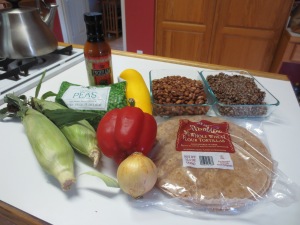

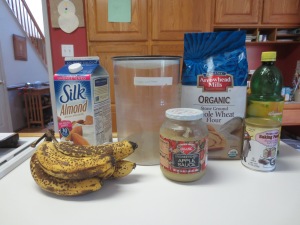
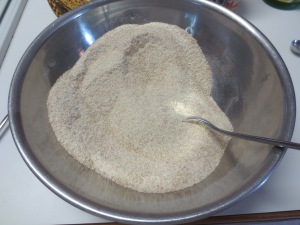
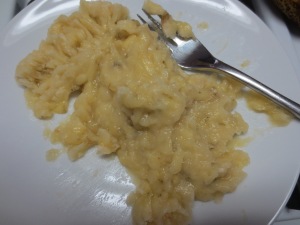

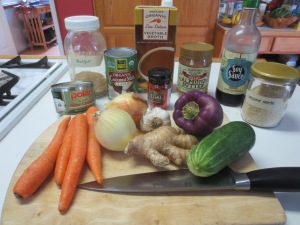
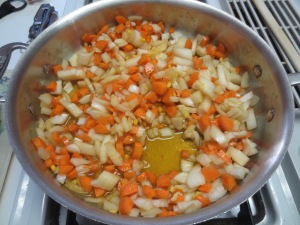
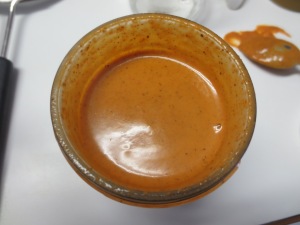
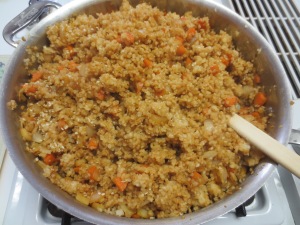

The World Needs Saving — Antibiotic Resistance Is a Big Deal
Hello faithful readers!
It’s been awhile since my last post — the blog is a labor of love, but I seem to be suffering from a chronic case of only-24-hours-in-a-day-itis, so the strategic time reserves have been overtaxed over the last few weeks. Nevertheless, I sally forth tonight.
The topic? Antibiotic-resistant bacteria. And the news (and there is news), is grim. But this discussion raises an even larger issue, and that’s this — how hard can I push on a subject before claims of alarmist writing overwhelm the utility of the underlying message?
It’s like plant-based eating. I can pile on evidence of its being an optimal diet both in terms of nutrient-acquisition and disease-avoidance, and that’s great. Or I could go combative-vegan, as opposed to garden-variety-vegan (couldn’t resist), and show you a bunch of hideous pictures of what takes place in commercial abattoirs, and while that makes a memorable point, it’s coming across a little strong for most readers out there who are reading this post at the end of a long workday.
My point is that there’s a balance to be had, and it tends to be a non-stationary target. So I’m writing this article not to scare you, but this is scary stuff and I guess I’d rather err on the side of alarmism than failure to inform my audience.
So let’s get on with the show and discuss antibiotic-resistant bacteria. For those of you unfamiliar with the term, let me catch you up with some broad brushstrokes.
If you’re both alive and reading this article, then you’re the beneficiary of a “golden age” of medicine — the antibiotic era. Most of you know that chronic diseases, such as cardiovascular disease and cancer, are our leading causes of death worldwide. According to the World Health Organization, cardiovascular diseases killed 17.5 million people in 2012 alone (1) (2). But this hasn’t always been the case. Humans have been around for somewhere between 100,000 and 200,000 years, depending a bit on your definitions. And for the vast majority of that time, Rite-Aid has not had whatever-sporin ointment on sale for $3.99 per half-ounce.
It’s hard to fully appreciate what this means since we’ve nearly lost living memory, at least in the western world, of life before antibiotics. But before antibiotics, and for the vast majority of humanity’s existence, infection has been a prolific killer, and heavily contributed to a very short average lifespan.
How many scrapes and cuts have you had over the course of your life? How many of those have become infected? For how many of those have you used some sort of antibiotic? Am I saying that without antibiotics, your next scratch is going to kill you? No, but the risk is there. If we lose antibiotic protection, simple infections can and will kill again.
David, that’s alarmist! My response? Fine — but only if, by alarmist, you mean pointing out uncomfortable truths. And what’s more? According to Maryn McKenna in her 2015 TED Talk, a loss of antibiotics also means a loss of protection for people with weakened immune systems, such as cancer patients, AIDS patients, transplant recipients and premature babies (3) (4). Further, let’s go ahead and cross off treatments which install “things” in the body — stents, pumps, pacemakers and joint-replacements (3). McKenna estimates that without antibiotics, 1 in 6 patients undergoing joint-replacements would die from infection.
If you’ve never had a joint-replacement then I can almost guarantee that you know at least several people who have. Would you be willing to undergo a knee-replacement operation if you had a 17% chance of dying? Or would you just live with the pain (which can be agonizing)?
Oh and we’re not done yet, because the next thing to consider is other surgeries, even routine ones, which today are nearly all preceded by antibiotics. Again, it’s not a death sentence, but there’s a very real risk attached.
What about pneumonia and strep? Humanity has suffered greatly from pneumonia, in particular. McKenna claims that we’ve seen times where pneumonia killed 30% of children (3), but I think that’s a striking overstatement. I’ve looked around a bit and found a 30% number, but that covers unidentified fevers, including pneumonia, scarlet fever, dysentery, etc (5).
But McKenna does raise an interesting point in that antibiotics allow us a certain confidence with which we approach our lives. There’s little reason to think that a simple infection is fatal. But if that assumption changes, what would that mean for the overall quality of our lives? What “safe” behavior suddenly becomes a serious risk due to the possibility of injury and resultant infection?
It’s a grim picture, and I don’t particularly enjoy being so fatalistic, but I think it’s important to share some of the background on this issue.
But what, then, is antibiotic resistance? And what does that have to do with anything? Antibiotic resistance is essentially all the inevitability of evolution sped up to a timeframe that we can see within our own lives. Bacteria, like all other life forms, grow, develop, thrive or die based on environmental factors and their genetic code. As bacteria reproduce (think approximately 20 minutes to produce a new generation(3)), that code is replicated and transferred, but sometimes what is essentially a copying error occurs.
That copying error is the random mutation of Darwin’s theory. Then comes the natural selection part — if the mutation prevents death at the hands of certain environmental stimuli, then the mutated bacteria will out-compete its peers when the stimuli are present. If you’re one of the last bacteria standing, then future generations will tend to have something very close to your genetic code, thus reinforcing that particular resistance.
So for our purposes, the mutation is a resistance to a certain antibiotic. It kills neighboring bacteria, but the resistant versions survive and reproduce, thus creating geometrically-expanding populations of resistant bacteria.
But David, this is all theoretical, right? Nope. Consider this — penicillin began widespread distribution around 1943. Resistance was detected around 1945. Vancomycin? Widespread distribution in 1972. Resistance in 1988. Imipenem? 1985 and 1998. Daptomycin? 2003 and 2004 (3).
Okay David, so we just keep making new antibiotics and we’re fine. Don’t worry about it! Well, no. Pharmaceutical companies are hesitant to drop big bucks into antibiotic R&D for the exact reason that resistance can develop so quickly. There’s too much uncertainty with respect to ultimate profitability.
But David, don’t we still have antibiotics that work? Well, yes and no. According to McKenna, 50,000 Americans die every year from infections that no drugs can help. Worldwide, that number is closer to 700,000 (3). We still have antibiotics that work, but we’re increasingly resorting to more dangerous varities — the ones which come with the scary and life-threatening side-effects. Liver failure, anyone?
And yet, that may be on the verge of changing. The bit of news that got me thinking about the topic of antibiotic resistance is the discovery, in 2013, of a colistin-resistant gene (called MCR-1) in e-coli bacteria in animals (pigs) in China, which has since become far more prevalent in that country and has been detected on other continents as well. What’s colistin, you ask? Good question. It’s one of those last-line antibiotics with the awful side effects. You don’t want to take this stuff if your life doesn’t absolutely depend on it. But even colistin may be falling as a last-line treatment as a recent Lancet Infectious Diseases study found MCR-1 in alarming numbers of samples in pork, chicken and even in human hospital patients (the percentage is low, but that it’s present at all is alarming) (6) (7).
Even more alarmingly, the Lancet study found that this resistance can spread horizontally in addition to vertically — that is to say that it doesn’t rely entirely on traditional evolutionary models — it can actually jump from bacteria to bacteria, spreading extremely quickly. The precise mechanism for these horizontal jumps is probably a layer of complexity beyond what most of my readers want, but if enough people ask, I can give it a shot.
There is no getting around the issue of antibiotic resistance — it’s an inevitable consequence of evolution in addition to its being facilitated by other mechanisms. The time that resistance requires for development is unpredictable — it often does rely on a random mutation, after all. But there ARE steps we can take to slow the process. What are they?
First, we have got to stop squandering our antibiotics. Penicillin, for instance, was sold over the counter until the 1950s (3). In many parts of the world, antibiotics are still sold that way. You can pick your numbers here — McKenna argues that in the USA, 50% of antibiotics used in humans are unnecessary, and that 45% of prescriptions in doctors’ offices are provided to relieve conditions which antibiotics can’t improve (such as viral infections) (3).
Think of it this way — everytime we use an antibiotic, we’re providing an opportunity for resistance to spread. If the bacteria in your particular infection happen to have developed a random mutation making them resistant to your antibiotic, then use of that antibiotic kills the other bacteria, leaving the resistant ones free to reproduce. If they then spread beyond your body, then congratulations — you win. Or, more accurately, we all lose.
In addition, 80% of antibiotics used go to support food production. Think livestock. Because of the unthinkable conditions of factory-farmed meat production (back to the balance I discussed at the beginning — it’s horrible, and in fact it’s so bad that once you learn about it, it haunts you), antibiotics are required to allow these animals to survive in sufficient quantities. Not only that, but also the antibiotics allow the animals to grow faster, making the food production business more efficient, more profitable, and a hell of a lot less humane.
But the ridiculous quantities of antibiotics used allow for a tremendous breeding ground, if you will, for resistance. This risk can be minimized by smarter food-production methods, methods that are both sustainable and more ethical.
So, dear readers, please consider the issue of antibiotic resistance. Tell your friends. Refer them to this article. What we need is something on the scale of the switch from incandescent to CFL and now LED light bulbs. We can slow the development of resistance by reducing the chances for resistance to develop. Don’t pressure your doctor for antibiotics unless there’s sufficient need (a lot of factors go into this calculation — use your judgment). But more importantly, know where your food comes from. Reduce consumption of factory-farmed meat (and, I would argue, reduce or eliminate meat-consumption altogether). If you must eat animal products, find better producers. If you live in the Virginia area, I’d highly recommend food raised by my friend, Joel Salatin, at Polyface Farms.
And don’t lose hope. Where McKenna goes wrong is in the doom and gloom — if you raise, too vocally, the spectre of inevitability and implosion, too many people will throw up their hands and ignore the issue (exhibit A — climate change). There are new drugs in the pipeline, but they’re very expensive and time-consuming to bring to market (think $10 years and a billion dollars each). So what’s needed is an all-hands approach — reduction in unnecessary use (both in humans and especially in food-production), better awareness, more emphasis on antibiotic R&D and, and I’m not generally a huge fan of pharma corporations, but I wonder if we should better incentivize the development of antibiotics through extended patent protection, tax incentives or the like.
We do not want to run out of useful antibiotics, and with the fall of colistin, we may have just run out.
Notes: